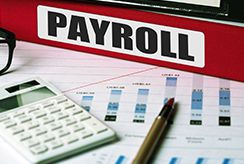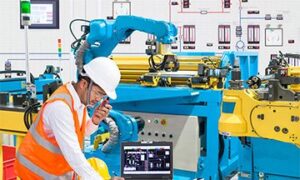Solar Energy System – Installation and Storage
Course Fee:
HISTORY OF SOLAR
• History of Solar
• Solar History Timeline
• Solar Panel Production
TYPES OF SOLAR ENERGY SYSTEMS
• Solar Electric / Photovoltaic Systems
• Solar Thermal Systems
• Off-Grid Applications
• Grid-Tied Applications
EVALUATING THE SOLAR RESOURCE
• Electromagnetic Spectrum
• Solar Irradiance
• Atmospheric Effects on Solar Radiation
• Latitudinal Effects on Solar Radiation
LOAD ANALYSIS
• Energy Audit
• Determine Load
• Peak Lead
SOLAR PHOTOVOLTAIC SYSTEMS
• Components
• Mounting Options
• Grid Interconnectivity
• Electronic Basics
• The Next Generation of Cheap Solar Cells
SOLAR HOT WATER SYSTEMS
• Collector Types
• Distribution Types
• Storage Types
• System Sizing
• Maintenance
SYSTEM MAINTENANCE
• Shading Control
• Snow
• Wind
• Cleanliness
• Batteries
• Troubleshooting
• Solar PV Systems: Users’ Maintenance Guide
PV MARKETS & APPLICATIONS
• Key contributions to the development PV
• Common types of PV systems
• Advantages & disadvantages of PV
• Features and benefits of standalone systems
• Features and benefits of utility-interactive systems
• Roles in the PV industry
• Opportunities for grid-tied and standalone PV systems
• Conservation & energy efficiency with PV
SAFETY BASICS
• Safety hazards of PV systems and components
• Personal protective equipment (PPE) requirements for installing PV
• Safe practices and OSHA standards
• Electrical hazards including shock and arc flash
ELECTRICAL BASICS
• Basic electrical parameters
• Power vs. Energy
• Common electrical system components
• Electrical test equipment
• Ohm’s Law
• Electric utility system operations
SOLAR ENERGY FUNDAMENTALS
• Basic solar terms
• Diagram the sun’s movement across the sky
• Sun path diagrams
• Factors that increase/decrease solar energy collection
• True North vs. Magnetic North
• Shading
• Gauging the solar window using software
• Avoiding inter-row shading
• Tools for measuring solar power and solar energy
PV MODULE FUNDAMENTALS
• Describe how solar cells transform sunlight into electricity
• Define PV cells, modules, panels, and arrays
• Five key electrical output parameters
• I-V Curve
• Series and parallel module connections
• Why PV modules make excellent battery chargers
• Performance rating & measurement
• Compare manufacturing fabrication processes of solar cells
• Crystalline silicon cells and thin-film modules
• Calculating efficiency per unit area
• PV modules as limited current sources
• Bypass diodes
• Qualification testing to ensure PV module safety & reliability
SYSTEM COMPONENTS
• Common System Configurations
• Major PV System Components
• Balance of System Components
• PV System Power Processing Equipment
PV SYSTEM SIZING PRINCIPLES
• Standalone vs. utility-interactive PV systems
• Determine peak power demand & energy consumption
• De-rating factors
• PVWATTS
• Maximum & minimum number of modules with inverters
PV SYSTEM ELECTRICAL DESIGN
• Prepare one-line electrical diagrams
• Identify the c properties of electrical conductors
• Nameplate specifications on PV modules and inverters
• Charge control
• Labelling requirements on PV systems
• PV system grounding
• Apply Ohm’s Law to calculate voltage drop
• Approvals and code compliance for PV systems
• National Electric Code
PV SYSTEM MECHANICAL DESIGN
• Common means of securing PV arrays
• Benefits of different mounting options
• Effects of temperature on PV cells
• Building-integrated PV (BIPV) applications
• Weather sealing
• Roofing structural attachments
• Structural loads (dead, live, wind, snow, seismic)
• Safety, performance, code compliance, and warranties
EFFICIENCY VS. RENEWABLE ENERGY
• What is “Efficiency”?
• What is “Renewable Energy”?
• Current costs of efficiency
• Current costs of renewable energy
THE BIG PICTURE
• Market Overview
• Impact of the financial crisis
• Impact of ARRA (stimulus) spending
• The predicted growth of solar
Methodology
The training methodology integrates lectures, interactive discussions, collaborative group exercises, and illustrative examples. Participants will acquire a blend of theoretical insights and hands-on practical experience, emphasizing the application of learned techniques. This approach ensures that attendees return to their professional environments equipped with both the competence and self-assurance to effectively implement the acquired skills in their responsibilities.
DATE:
1ST BATCH: 10th–13th Feb, 2026
2ND BATCH: 2nd–5th Jun 29th, 2026
3RD BATCH: 28th – 30th Sep, 2026
Course Category
- Human Resource and Admin
- Finance and Accounting
- Internal Audit and Fraud Control
- Stores, Procurement and Supply Chain
- Information Technology
- Aviation and Maritime
- Banking, Investment and Insurance
- Business Communication
- Construction Management & Civil Engineering
- Engineering, Instrumentation and Maintenance
- Entrepreneurship and Business
- Hotel & Hospitality Management
- Law and Contract Management
- Management and Leadership
- Project Management
- Public Relations
- Public Sector
- Sales, Marketing & Customer Service
- Secretaries & Personal Assistants
- Transport & Logistics
- Security and Safety
More Courses
VENUE
25, Queen street, Alagomeji Bus Stop, Yaba, Lagos










